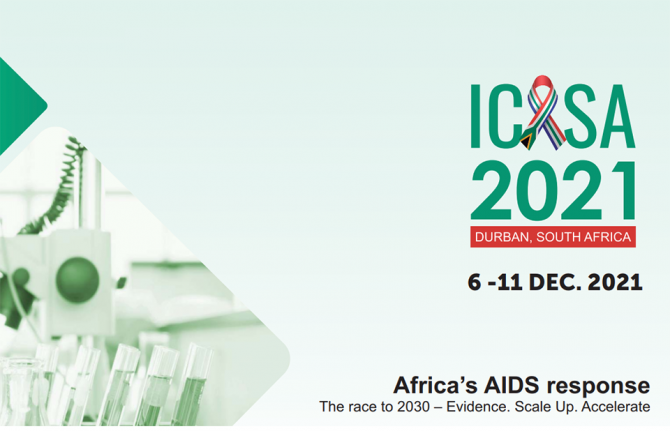

Press Statement
UNAIDS calls for urgent action to end the inequalities driving HIV and other pandemics around the world
06 December 2021 06 December 2021GENEVA/DURBAN, 6 December 2021—As the 21st International Conference on AIDS and Sexually Transmitted Infections in Africa (ICASA) opens in Durban, South Africa, UNAIDS is calling for urgent measures to be taken to reduce the inequalities fuelling the twin pandemics of HIV and COVID-19. The mainly virtual event is being held against the backdrop of increasing COVID-19 infections driven by the new omicron variant of the coronavirus identified by South African researchers last month.
“Progress in AIDS, which was already off track, is now under even greater strain as the COVID-19 crisis continues to rage, disrupting HIV prevention and treatment services, schooling, violence prevention programmes and more,” said UNAIDS Executive Director, Winnie Byanyima. “We cannot be forced to choose between ending the AIDS pandemic that is raging today and preparing for the pandemics of tomorrow. We need African-led solutions and visions of pandemic preparedness.”
The conference is taking place just a week after UNAIDS released its World AIDS Day report, Unequal, unprepared, under threat: why bold action against inequalities is needed to end AIDS, stop COVID-19 and prepare for future pandemics. The report warns that the world could face 7.7 million AIDS-related deaths in the next decade if leaders fail to tackle the inequalities that drive the HIV pandemic.
A total of 25.5 million people are living with HIV in Africa, accounting for two in three of the global number of people living with the virus. There has been good progress in delivering treatment to people who need it over the past decade, with 19.5 million Africans living with HIV now receiving medicines to keep them alive and well, up from 5 million in 2010. But new HIV infections remain too high, at 890 000 in 2020. Women and girls continue to be worst affected, accounting for 62% of all new HIV infections in 2020.
In sub-Saharan, 4200 adolescent girls and young women between 15 and 24 years old become infected with HIV every week. In 2020, key populations (sex workers and their clients, gay men and other men who have sex with men, people who inject drugs, transgender people) accounted for 39% of new HIV infections in sub-Saharan Africa.
However, some countries, particularly in eastern and southern Africa, are showing how sustained progress can be made against the HIV epidemic with the right mix of properly funded evidence-informed programmes that put human rights at the centre of the response. Eswatini, for example, has surpassed the 90–90–90 treatment target (90% of people living with HIV know their HIV status, of whom 90% are on antiretroviral treatment and of whom 90% are virally supressed) to achieve 95–95–95. In Eswatini, Lesotho and South Africa, a higher coverage of combination prevention options, including social and economic support for young women and high levels of treatment coverage and viral suppression for previously unreached populations, have reduced the incidence of new HIV infections among young women and girls. Botswana last week became the first country with a high-burden HIV epidemic to be certified as having brought the mother-to-child transmission of HIV rate to under 5%, provided antenatal care and antiretroviral treatment to more than 90% of pregnant women and achieved an HIV case rate of fewer than 500 per 100 000 live births.
The picture in western and central Africa is more complicated, with less progress being made to end mother-to-child transmission of HIV. In 2020, just 56% of pregnant and breastfeeding mothers were on HIV treatment to keep them alive and well and prevent their children from becoming infected with HIV, compared with 95% in eastern and southern Africa. Western and central Africa is home to 4.7 million people living with HIV—13% of those living with HIV globally—but experiences 21% of all AIDS-related deaths in the world.
UNAIDS and the Civil Society Institute for Health in West and Central Africa recently organized a three-day regional summit on HIV in Dakar, Senegal, which resulted in the Dakar Call to Action, which urges stronger support for community-led responses, policies driven by science and data, increased investment in the HIV response and putting HIV at the centre of pandemic preparedness and response.
In her opening address at ICASA, Ms Byanyima stressed that community-led and community- based services and civil society accountability are a key part of what has worked in the AIDS response.
UNAIDS
The Joint United Nations Programme on HIV/AIDS (UNAIDS) leads and inspires the world to achieve its shared vision of zero new HIV infections, zero discrimination and zero AIDS-related deaths. UNAIDS unites the efforts of 11 UN organizations—UNHCR, UNICEF, WFP, UNDP, UNFPA, UNODC, UN Women, ILO, UNESCO, WHO and the World Bank—and works closely with global and national partners towards ending the AIDS epidemic by 2030 as part of the Sustainable Development Goals. Learn more at unaids.org and connect with us on Facebook, Twitter, Instagram and YouTube.
Contact
UNAIDS GenevaMichael Hollingdale
tel. +41 79 500 2119
hollingdalem@unaids.org
UNAIDS South Africa
Scott McQuade
tel. +27 8364 267 59
mcquades@unaids.org
